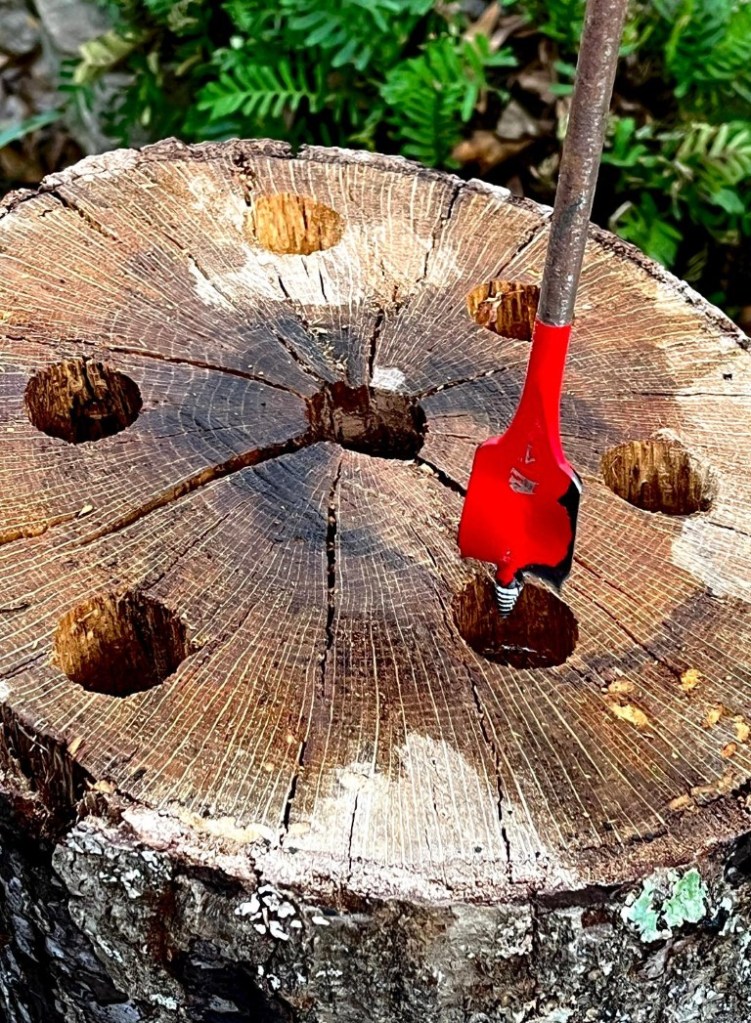Best ideas for removing old tree stumps
Published 4:39 pm Tuesday, October 8, 2024
By Felder Rushing
Gardening Columnist
One thing Mississippi has a lot of lately, is tree stumps. What with powerful storms and last year’s severe drought, there are countless thousands jutting up in peoples’ yards.
Trending
I love stumps, their slow decay, the colorful lichens and fungi, the wildlife; I even have a dedicated “stumpery” in a shaded spot where I drag moss-covered logs, complemented with ferns, liriope, and other shade plants (see it at felderrushing.blog). Other folks simply ignore them, and hope others understand. Or cut the stumps low enough to mow over, or leave a few inches high and set potted plants on top, or plant ornamental grasses and vines around the area.
When I cut down my dead magnolia I let groundcover vines hide it; another multiple-trunk tree beside my front deck was sawed off to waist high and topped with a round glass table top. Another got drilled with half inch holes and festooned with rebar sticks topped with glass bottles, creating an informal sprangly glass sculpture.
Problem is, stumps can easily last over fifteen years, and slowly decompose leaving holes and depressions that can cause problems later. My dad kept a big dirt pile in the back yard which kids and grandchildren played on until he eventually wheelbarrowed it away to fill tree holes.
But last month during a building project I had to have a tree removed, stump and big roots and all. I went for the instant gratification of having a guy with a trailer-mounted stump grinder do the work, which quickly took it down to well below ground level; it wasn’t all that expensive plus I ended up with some mighty fine dirt-and-chips mix for my garden.
But what’s the best way to remove stumps without a lot of chain sawing or hiring heavy equipment? I’ve seen, heard, and read about every angle you can imagine, including some persistent myths that are ineffective or downright dangerous, but I stick to what works the easiest.
First, you can’t just go out and buy sticks of dynamite. Nix that one. And pulling it out with a chain is a good way to lose a truck’s rear bumper or axel. A lot of folks recommend burning, which is not always practical but can work best if you drill holes in the stump, soak it for a few hours with diesel fuel (not gasoline, which explodes better than it burns) and set it afire. Because it will burn and smolder for a few days, you really ought to check with the local fire codes first. And keep a hose handy.
Trending
If you have time, the most practical approach is simply helping it rot a quickly as possible. This is surprisingly simple and nearly effortless through cultivating bacteria, fungi, and other natural wood decomposers. They have simple needs, but can remove a stump within just three or four years, or soften it enough within a year or two to make chopping or burning easier. And you can get some mighty pretty mushrooms along the way.
Here’s how: Drill lots of half inch holes as deep as you can go, which let air and water get down deep. Throw dirt over the holes to “inoculate” the wood with fungi, then sprinkle in any kind of nitrogen fertilizer – even lawn food – to provide the nitrogen the organisms need to work quickly. No need for Epsom salts (what an overblown myth!), motor oil, or other gimmicky ingredients, just nitrogen fertilizer.
Those are our choices: Saw, grind, burn, or aerate and compost, or just set a concrete gnome on top and find something else to do.
Felder Rushing is a Mississippi author, columnist, and host of the “Gestalt Gardener” on MPB Think Radio. Email gardening questions to rushingfelder@yahoo.com.





